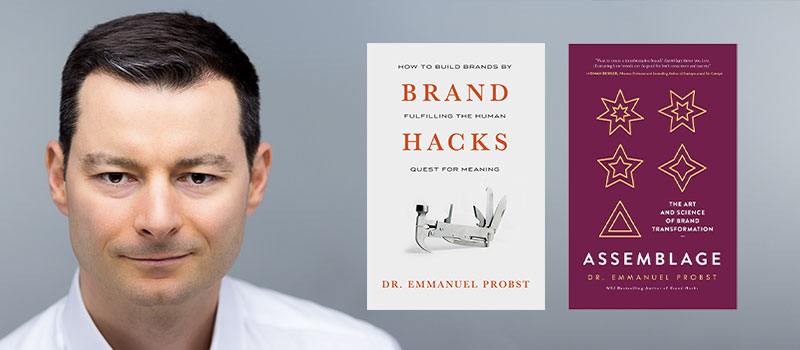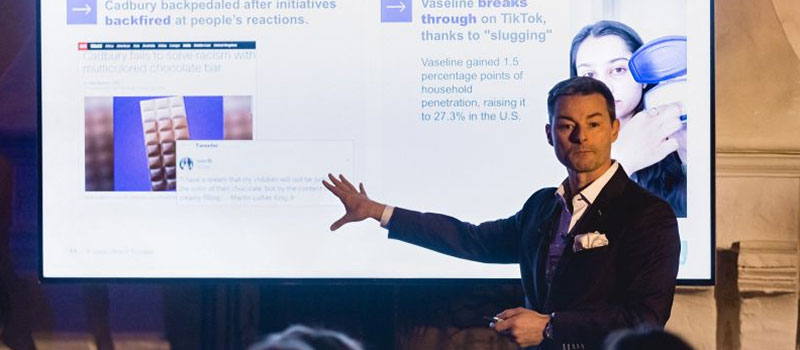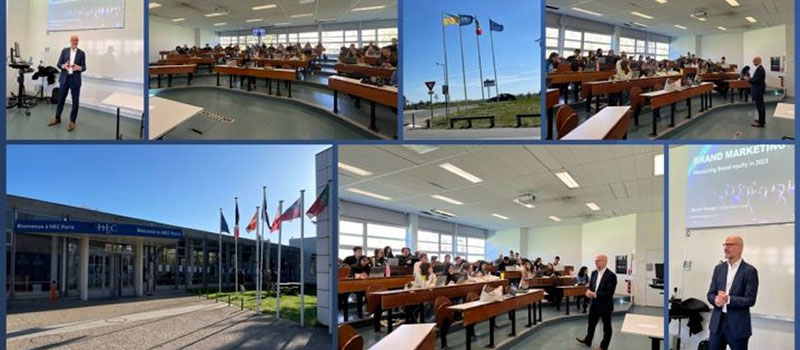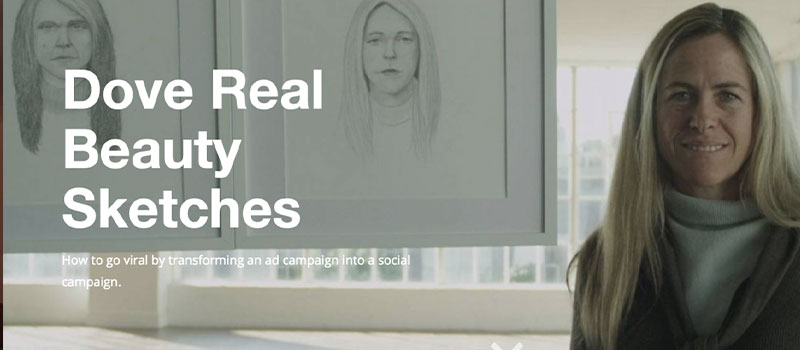In this article, I’m joined by Emmanuel Probst author, marketer and brand strategist with over 17 years of experience.
Now for those who don’t know him, Emmanuel is a strategist who’s passionate about building brands that don’t just sell, but transform people and the world they live in.
He teaches students the tools they need to become successful brand strategists at UCLA…
He hones his craft at Ipsos, helping clients to measure and amplify how brands and consumers connect

He shares the fruits of all his knowhow and experience in his books Brand Hacks and his latest Assemblage – The Art And Science Of Brand Transformation…
Earning accolades from the likes of David Aaker, Jonah Berger, and Rory Sutherland to name a few.
And in this article we explore
How to use brand to shape consumers perceptions and
How data and insights can be used to deliver a personalised consumer experience
So, if you want to learn about brand strategy from a well-respected brand strategy professor, author and executor… then don’t miss this article
Emmanuel Probst Art & Science Journey

Stephen Houraghan
But before I start attacking you with questions, can you give us a little bit of background as to where you’ve come from and how you fell into this really niche area of the science behind branding?

Emmanuel Probst
I come from a passion for understanding why people do what they do. You asked for an introduction, and I do three things.
Firstly, I’m the global lead for brand thought leadership at SOS.
Secondly, I teach consumer market research at the University of California, Los Angeles (UCLA).
And lastly, I write my books.
These three things have a common goal, which is to understand why people do what they do.
My focus is on consumer psychology so that as marketing and advertising professionals, we can build stronger brands.
This has been my passion for over 17 years and has kept me on my toes.
PRO Brand Strategy BluePrint
Build Brands Like A Pro Brand Strategist

Human Brand Philosophy in Marketing

Stephen Houraghan
Look, we share 100% similar passions. Obviously, you have deep-dived into a very specific segment of branding that I have a real interest in.
You have made that your life’s work, and something that you said before also resonates with me.
It’s why we do what we do and aligning that with the brands that we build and connecting those brands to people.
When it comes to people, there is always a reason behind what we do.
The more we understand about the psychology and neuroscience behind how our brains work and how we interact, the better prepared we are as marketers and brand builders to make connections with people.
Do you adopt this human brand philosophy?
That the brands we build are human entities that we’re building to connect with other people?

Emmanuel Probst
I hear two things in what you’re saying.
One is the opportunity, and I would say the imperative, to humanize the brand and humanize organizations to make them more relatable. And reduce what we call the social distance between the brand and the user.
So that’s where authenticity is important. That’s where demonstrating a purpose becomes important.
That’s, as I like to say, imperfect is perfect and what I mean by this is a brand and its representatives don’t always have to be perfect.
They can have flaws, they can make mistakes as long as they intend to improve themselves.
So that’s very important and then you asked about how do people communicate, and that touches on what we call in academia symbolic interactionism.
And I don’t want to get too philosophical in this podcast, but what this means, symbolic interactionism, is people use symbols and brands to communicate.
What this means is, together as individuals, with our group of friends, with our relatives and significant other and whatnot, we use objects and we use brands to define, well, to communicate and to define what reality is for us.
So what this means is we might together create meaning for Nike sneakers, for example, or for a certain brand of toothpaste or for a certain brand of beauty products.
What does this mean to us and how do we relate around this product and around this brand?
The Significance of Brand Perceptions

Stephen Houraghan
I think what you touched on there really brings the significance of perceptions into play as the arena that brands operate in.
Because when we talk about brands, of course, we see brands on billboards, we see brands on screens.
We see brands on products, but really brands kind of live and die in the mind as a perception and those perceptions.
In my experience and through my philosophy, they are built over time through different touchpoints.
Have you, in your experience, improved ways that we can use to shape those perceptions in the mind of the audience?

Emmanuel Probst
I hear three things that are important.
Burns our perception.
Absolutely. The short answer, what’s important is hard to do people.
How does the audience define your brand?
In other words, As a marketer, a brand is not what you say it is. The brand is what they say it is.
The second aspect is you said those perceptions still live and die.
I will say they evolve over time and so the second aspect that seems important in what you said, is brands are dynamic.
They’re dynamically created, they’re not static.
But I should say they’re no longer static. That’s why it’s so important with social media and the ability for people to talk back at brands and we can talk about it further.
And the last aspect, you spoke about perception.
There’s a chapter in my latest book, “Assemblage: The Art and Science of Brand Transformation” that says perception is the truth.
What I mean by this is we construct our own. , based on our perception of the world and based on the information we are exposed to, and frankly in a way based on what we want the truth to be.
In marketing, it’s really important to remember that what matters is how people perceive the brand, not what the brand and the products really are.
Explore Brand Strategy
Programs & Tools
The Battle for the Consumer’s Mind: Positioning and Brand Associations

Stephen Houraghan
I really like that as well because it ties into the classic book “Positioning” by Al Reese and Jack Trout, which talks about how positioning is the battle for the mind.
At the end of the day, the battle for a consumer’s attention and loyalty takes place in their mind.
As brand builders, we don’t position our brands; it’s the consumer who positions the brands based on their own truths. Brands can put messages into the market and design experiences to shape those touchpoints.
However, it’s the consumer’s experiences and engagement with the market that ultimately determine where a brand is positioned.
Brand associations are crucial for brands to align with particular ideas and create perceptions in the minds of their audience.

Emmanuel Probst
I’m happy to build on what you said. Let’s reflect on brand association and how brands are created in the minds of people.
We were saying earlier, Stephen, brands are no longer static; brands are dynamic.
We spoke about perception, and I was alluding to the process of co-creation and we can expand on this to say that 5, 7, 9 years ago, brand strategists could mostly dictate what the brand should stand for.
You put a brand playbook out there, and you tell people what it is. The way the world has evolved is that brands are now, or should be, co-created with the audience.
That’s what I meant, and that’s where I’m linking back to what you said about brand association and perception.
So this process of co-creation is important.
Since people can now easily communicate with the brand, people can promote the brand. The concept is not new. However, they can do this at scale 10 years ago, you could promote the brand to 7 to 10 people around you.
Now, you can do so to hundreds, thousands, dozens of thousands of followers on social media. That said, people can also be detractors and even cancel the brand.
Therefore, people expect to be involved in this process of co-creation.
So what I mean by this is, as brand strategists, you can define the key driving pillars, the foundation of what your brand stands for, and you have to be willing to be vulnerable and engage in this process of co-creation with your audience to further define what the brand stands for and what they want the brand to be.
Co-creating Authentic Brands with Audience

Stephen Houraghan
So how do we do that, then?
How do we co-create with our audience?
You’ve touched now a couple of times on brand authenticity, and it’s something that I very much believe in.
I don’t see it as a buzzword that brands should be authentic or there are a lot of brands misrepresenting authenticity.
I think when you bring branding back to the human brand philosophy, then just like people, different people show up as either the more real version of themselves or the kind of fake version of themselves.
And we tend to gravitate towards that realism and that authenticity.
And I think we’ve been starved of that a lot really in recent decades through social media and through this Instagram lifestyle and, you know, fake social profile.
So we’re kind of craving that authenticity.
How can we use that authenticity to co-build the brands with our audience?

Emmanuel Probst
In today’s market, understanding your audience is key to building a successful brand. The co-creation process is a powerful way to gain insights and knowledge about your audience.
By listening and analyzing what people say and do, you can tailor your brand message to better connect with your customers.
At Ipsos, we have a client in the alcohol category named Paranoia. To gain insights about their customers, we not only conducted surveys but also asked participants to send pictures of how and when they consume alcohol.
This approach helped us to understand two important things.
Firstly, the words and the environment people used to describe the product in their own words.
Secondly, the moment of conviviality, meaning the occasion when people consume alcohol.
By analyzing the pictures and feedback, we were able to tease out keywords and code those keywords to understand how people describe Paranoia’s products.
This helped us to better integrate those words into our communication and make it more authentic and relatable to our target audience.
The co-creation process is a great way to learn and absorb information from your audience.
By leveraging the insights you gain, you can articulate your brand while remaining in control of a big idea for your product.
When you listen and understand your audience, you can build a better connection and gain a competitive edge in the market.
Feedback Loop In Brand Evolution
Stephen Houraghan
I really, really like that and I guess really it’s about creating that feedback loop and allowing that feedback loop to really evolve the brand over time.
I’ve seen this as well with McDonald’s recently in the World Cup and their campaigns, kind of highlighting the different names that people from different countries use to say McDonald’s.
Whether it was in Australia, they’re called Maccas, in France they’re called Mac Do, and in other places, it’s Mickey D.
That’s a great example of how McDonald’s is using that feedback loop to listen to what their audience is saying, to adopt their language, and to co-create with them.
In terms of the work that you did with Peró Ricardo, what did opening that conversation look like?
Is this simple outreach in terms of opportunities to be engaged with the brand?
How exactly did you open that feedback loop with this particular strategy?

Emmanuel Probst
Paragon has made efforts to change their approach towards product analysis. Traditionally, companies have compared their products with those of competitors.
However, this is not necessarily how consumers view the products. For example, when buying vodka, marketers might benchmark different brands against each other.
But consumers are more likely to consider the occasion for which they are buying the alcohol. For instance, they might buy champagne for a special event or beer and mixers for a barbecue.
Paragon has identified these moments of conviviality (MOCs) as key insights for marketing their products. They use data collection at scale, which includes gathering data from surveys, social media, and pictures, to determine the touchpoints and keywords associated with these MOCs.
Data science is then used to process this information and create effective marketing strategies.
Understanding consumer psychology is crucial to these efforts.
People do not typically shop for vodka or whiskey in isolation, but rather with a particular occasion or event in mind.
This perspective has led to a more consumer-centric approach to product analysis, with a focus on how products fit into consumers’ lives and social gatherings.
Using Mythology and Psychology in Brand Communication

Stephen Houraghan
I love that. It’s really using what the customer is already doing and saying and giving their context and language back to them to make the brand more relatable, which I absolutely love.
Now, in your book “Assemblage”, you do touch on mythological, psychological concepts, and anti-heroes, villains, and saviors.
How do you see this as an integration for the way brands communicate with their customers?

Emmanuel Probst
So both in marketing and in pop culture, we are very familiar with the archetype of the hero.
So the hero is Batman. The hero is Superman. The hero in advertising is, Mr. Clean and the Hebrew is someone who has superpowers.
In short, that’s what Hebrew is about. I thought it’d be interesting to zoom in on the anti-heroes villas and saviors, and that’s because they are all relatable in their own ways.
So an anti hero is someone who can act heroically, yet has flaws.
So think of Tony Soprano., think of Don Draper in Madman and we relate to anti-heroes because in a way they’re like us.
Like can very talented James Bond is an anti-hero. He’s an anti-hero because he can save the world from evil at times, yet he’s very flawed. He’s obviously struggling with.
Alcohol in particular, and his relationship to women is rather rocky at times to put it this way and it kills people.
Modern-day saviors could be Jeff Bezos, or these days Elon Musk would like to be savior and save Twitter maybe or if anything, save the world, from global warming.
Indeed what’s interesting is how relatable they are and you are talking about authenticity.
The need authenticity in advertising.
One great way to articulate authenticity to the audience is to show people and heroes that are not perfect.
Authenticity and the Evolution of Brand Communication

Stephen Houraghan
I really like the anti-hero archetype because we connect to the flaws probably more than we do to the strengths because we all see those flaws in ourselves.
Between the struggle of the flaw and the desire to do the right thing, I think when we see those flaws, we’re able to trust that this person is showing up as their authentic self.
We’ve come from a period where flaws are kept behind the scenes, and we’re left with this polished version where we know it’s not real.
We’ve got this craving for authenticity and for people to show up as the true version of themselves. How do you see that playing out in the coming decade or so because I’ve certainly seen a change in brands and how they communicate.
We’ve touched a little earlier on the digital transformation and brands coming out from behind the curtain with social media because they had to engage in the conversation.
That evolution has been huge over the past 10-15 years.
How do you see brands evolving in the coming 10-15 years, with the desire from consumers to want more authenticity, to see flaws, and to see brands standing up for what they believe in, and not just talking the talk but also walking the walk?
Where do you see things going in the next 10 or so years with brands?

Emmanuel Probst
I think we’re moving towards more authenticity in a good way. A category that really exemplifies this shift is the beauty and apparel industry. 5, 7, 10 years ago, all we saw were perfect models in advertising.
Fast forward to today, we see the success of initiatives like Dove’s “Real Beauty” project that tell the audience it’s okay if you don’t fit traditional beauty standards.
The world is becoming more authentic, and brands are becoming more relatable. When I buy makeup or clothing, I no longer have to look exclusively like Kate Moss.
I can be myself and feel beautiful. Brands must transform people and the world they live in.
What I expect from the brand is to take me from who I am to who I want to become, to transform me into someone who is beautiful and feels beautiful.
The Role of Brands in Promoting Authenticity and Social Change

Stephen Houraghan
I talk extensively about Dove and their self-esteem project because I believe they were pioneers in breaking the mold.
The Real Beauty campaign debuted in 2004, and now we see other brands follow in their footsteps. It’s become the norm, and it’s really giving consumers what they’ve been demanding for so long.
Brands are taking more of a role for change in the world and acting as a voice for consumers because we’re not getting it from governments or religious leaders.
Brands seem to have that platform and clout to push the message for change. Do you believe that brands will become representatives of their people?

Emmanuel Probst
Where we’re going is for brands to become representatives of their people. To me, that’s the shift and that’s what is so important.
In the seventies, brands and marketers were known for selling cigarettes and alcohol. Fast-tracking to today, there is a true opportunity for brands.
I cover this at length in the book and show brands how to make a positive contribution to economic recovery, society, and the world around us.
Not only should brands act more responsibly in the future, but I truly believe that marketers and brands have an opportunity to do the right thing and make a positive contribution.
Tech brands can educate people and small businesses on how to use digital tools.
Sustainability is another area where brands like Levis, Lululemon, and Ikea encourage customers to bring back used items for a second life.
There are many initiatives I cover in the book.
The short answer is that there’s a shift from brands just force-feeding people with products they don’t need to brands making a positive impact on society and the world at large.
Adopting a Positive Brand Philosophy for Small Businesses

Stephen Houraghan
I 100% believe that’s where we’re going, and there’s evidence to show that’s where we’re headed in terms of the audience I speak to.
We tend to be brand strategists that deal with smaller companies, so entrepreneurs starting their businesses for the first time, launching new brands.
How can small businesses adopt this philosophy without having massive research and development budgets like Dove did with their self-esteem project?
Smaller brands can communicate their ideals through everyday interactions without necessarily having a massive budget to promote them.
We want to adopt this same philosophy as small businesses, but it can be a bit of a contradiction to say we’re going to change the world when we’re just trying to make it in the world.

Emmanuel Probst
Authenticity is easier to achieve for smaller brands compared to larger ones.
This is because small brands can relate to their community and tell them that they are like them and are there to make something great.
In contrast, larger brands like Unilever, McDonald’s, or Coke have to work hard to appear close to people and have local store authenticity because they have thousands of locations worldwide.
To achieve authenticity, small brands can use their personal stories and the story of their brand to relate to their audience and community.
Voice keywords, images, and colors can also be used to convey an authentic message to the audience.
While data science may seem sophisticated, small brands can leverage data collection to connect with their audience in an authentic and relatable manner.
Small brands can collect email addresses and use them to connect with their audience. Although they may have fewer names compared to larger brands, the opportunity to connect with the audience is the same.
Overall, achieving authenticity is easier for small brands than for larger ones like Unilever, McDonald’s, or Coke.
Building Authentic Connections With Your Audience

Stephen Houraghan
For those interested in the concepts discussed, it is recommended to read the book for a deeper understanding.
However, the main lesson from this conversation is to start with authenticity in building a business.
Communicate with your audience, listen to their feedback, and use their language to create real connections based on how people interact.
Identifying flaws and being open about them can also contribute to authenticity and brand personality.
It is important to consider what attributes and values to show through authenticity in order to make those human connections.
While there are many high-level concepts discussed in the book, focusing on authenticity is a practical way to apply these ideas to day-to-day actions. The book goes into more detail than what can be covered in a 30-minute conversation, but small business owners can use these concepts to build their own unique brands?

Emmanuel Probst
I think you covered the gist of it. The starting point, the overarching context is to keep in mind that people, not brands, seek more products. There are very few brands that have this devotion.
We like to talk about people lined up in front of Apple stores waiting for the next iPhone, but it’s very anecdotal.
The truth is, maybe Nike is one, maybe Ferrari is one, but you have very, very few brands where people are that devoted.
Start from the assumption or painful assumption that your brand is not that important to people. From there, learn this emotional connection with your audience, and that’s really your opportunity.
Realize that most people don’t care about most brands. What people care about is they care about the end transformation.
Your brand is the tool they need to become the hero. The hero is the consumer. The hero is not your brand.
Your brand is going to facilitate this transformation from who am I to who I want to become.
Your brand is going to re-energize my local community, help with economic recovery after Covid and during the recession, and help with saving the environment.
That’s where your brand comes in. That’s your starting point, and that’s how you build a brand at scale, whether you start with 100 million, like the large ones we spoke about, or 100.
Wanna Learn More About
Brand Strategy?
On-Demand Digital Program
Brand Master Secrets
Make the transition from hired-gun to highly valued brand strategist in less than 30 days. The systems, frameworks and tools inside this comprehensive program are all you need to level up.













